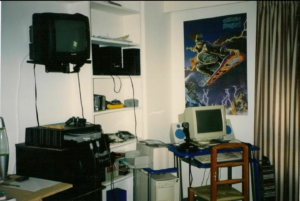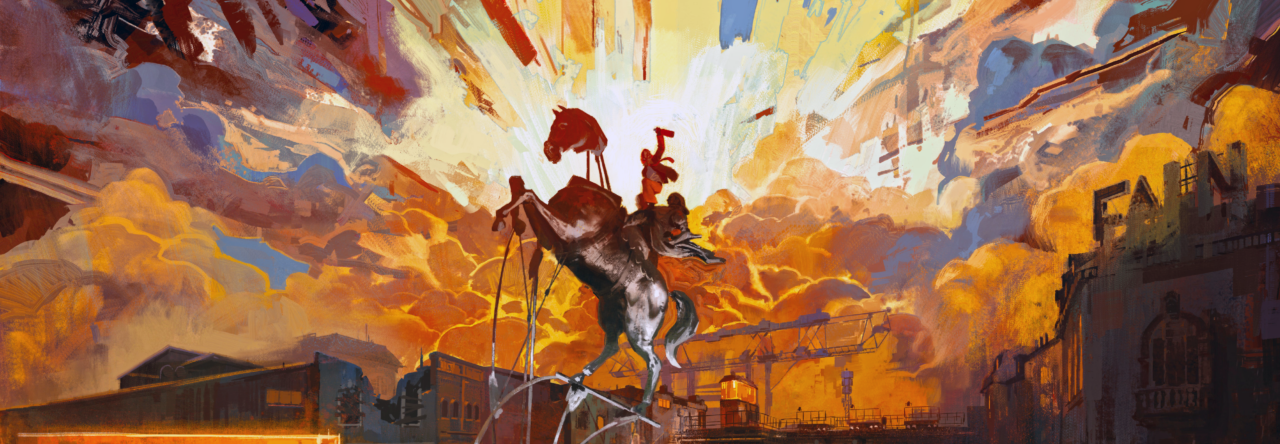About Knowledge
This week, Frances Davis introduced us to the curatorial practices of ATLAS Arts, particularly focusing on how to engage with local histories, cultures, and visions of the future through art projects in remote areas such as the Scottish Highlands. We studied Lauren Gault’s project Samhla and discussed how audience experience shifts when artworks are presented in different geographical contexts. At the same time, we began to think more critically about the interaction between space, time, and the audience in curatorial practice.
About the Discussion
One question from class left a strong impression on me: “Why choose to exhibit online? What does it change?”
Through analyzing the online presentation of Samhla, I began to realize that different modes of exhibition—physical or digital—silently reshape the artwork itself:
①Offline exhibitions emphasize the sense of place, where the audience must “be present” and experience the tension between the work and the environment; ②Online exhibitions amplify the fluidity of time and space, allowing broader access but diluting the physical context of the work.
This reflection made me reconsider how my own project should be presented: is the exhibition meant to be fixed, or could it become a fluid, evolving experience?
ATLAS’s approach particularly stresses the idea of art as a bearer of stories, rather than simply a means of display. This made me realize that curating can be a form of storytelling that crosses both time and space—not only conveying the past but also calling forth possible futures.
I began to wonder: perhaps my project is meant to do the same. If it were merely about playing games, I could just create an online playlist for everyone. But then, why gather people in a physical space?
My Project Progress
This week, I officially confirmed the title and theme of my curatorial project: Play and Pay: The Capitalist Evolution of Video Games.
It is an exhibition exploring the relationship between “play” and “consumption,” and an attempt to think critically about how contemporary media and economic structures are deeply entangled.
I started tracing the ways video games have been shaped by capitalist logic—from arcades to home consoles, from game halls to esports arenas. Technological evolution has always accompanied the evolution of business models.
Therefore, I decided to structure the exhibition around three major sections:
- Narrative: How storytelling has been commercialized;
- Devices: How hardware has shaped consumption paths;
- Systems: How gaming systems mirror or replicate real-world economic structures.
At the same time, I have been thinking carefully about the exhibition’s spatial language.I do not want to create a “video game archive” filled with explanatory text panels, nor do I want the exhibition to be a mere “nostalgic recreation.”In my inspiration board, I have collected images of arcades, living rooms, and esports centers from different eras, and developed the idea of Time-Sliced Living Rooms as the main structural metaphor: Each exhibition unit would represent not only a technological stage but also a theater of viewing and consumption practices—an idea that directly ties back to the reflections I had during class!

Family game room in the 2000s
About “Video Game Archaeology”!
One key development this week was that I started to formally establish one of the methodological approaches for the exhibition: Video Game Archaeology.
The idea came to me as I tried to map the formal and technological evolution of video games from the 1970s to today. While searching for materials, I was inspired by an internet phenomenon: YouTube channels and online communities like Summoning Salt, Ahoy, and Retro Game Mechanics Explained, where players spontaneously uncover, restore, and narrate forgotten aspects of video game history.
Henry Lowood (2009) suggested that video games are not just technological artifacts but cultural products whose histories should be preserved, restored, and retold like works of art or literature. Raiford Guins (2014) discussed the “afterlife” of video games—that is, how games are given new cultural meanings after their commercial life ends, through the actions of players, collectors, and preservationists. He framed restoration and re-exhibition as acts of cultural archaeology and memory work. Tanya Krzywinska (2002) directly used “archaeology” as a metaphor to excavate hidden traditions, narrative structures, and cultural meanings embedded in different generations of horror games, treating each generation as a cultural stratigraphy that reveals social fears and technological shifts. I believe Krzywinska’s concept aligns most closely with my thinking, so I have decided to call this approach Video Game Archaeology.
This grassroots, community-driven “electronic archaeology” practice has greatly inspired me. It helped crystallize a key curatorial concept: Video games are not merely consumer goods—they carry layers of cultural sediment and transformation. Therefore, in the exhibition, I do not want to present video game history as a static museum display. Instead, I hope to create a living, dynamic space where audiences are invited to act like archaeologists: excavating, connecting, questioning, and reconstructing their own memories and experiences.
—–
Reference
-
Henry Lowood, “Videogames in Computer Space: The Complex History of Pong” (2009)
-
Raiford Guins, Game After: A Cultural Study of Video Game Afterlife (2014)
-
Tanya Krzywinska, “Hands-On Horror” (2002)



Leave a Reply